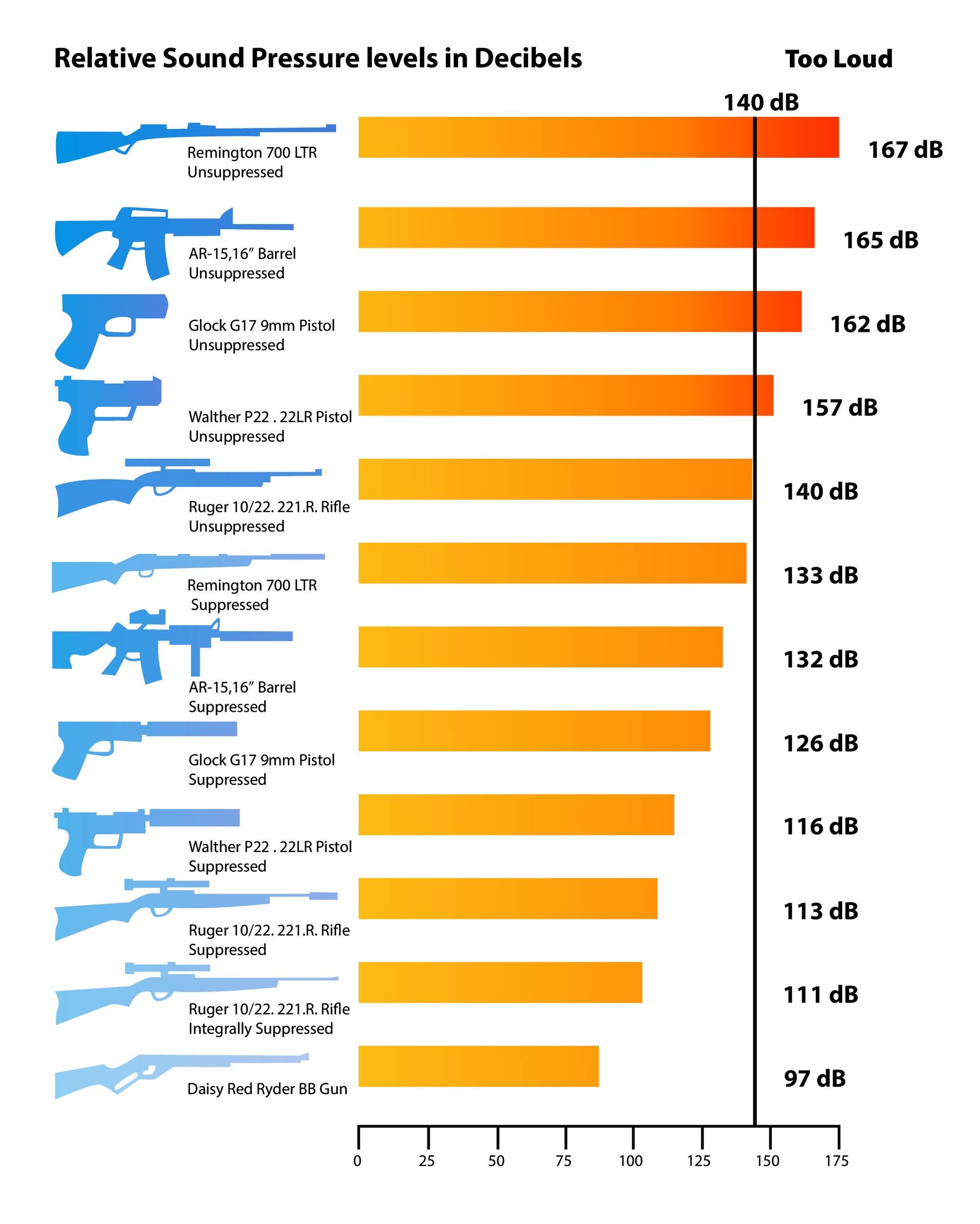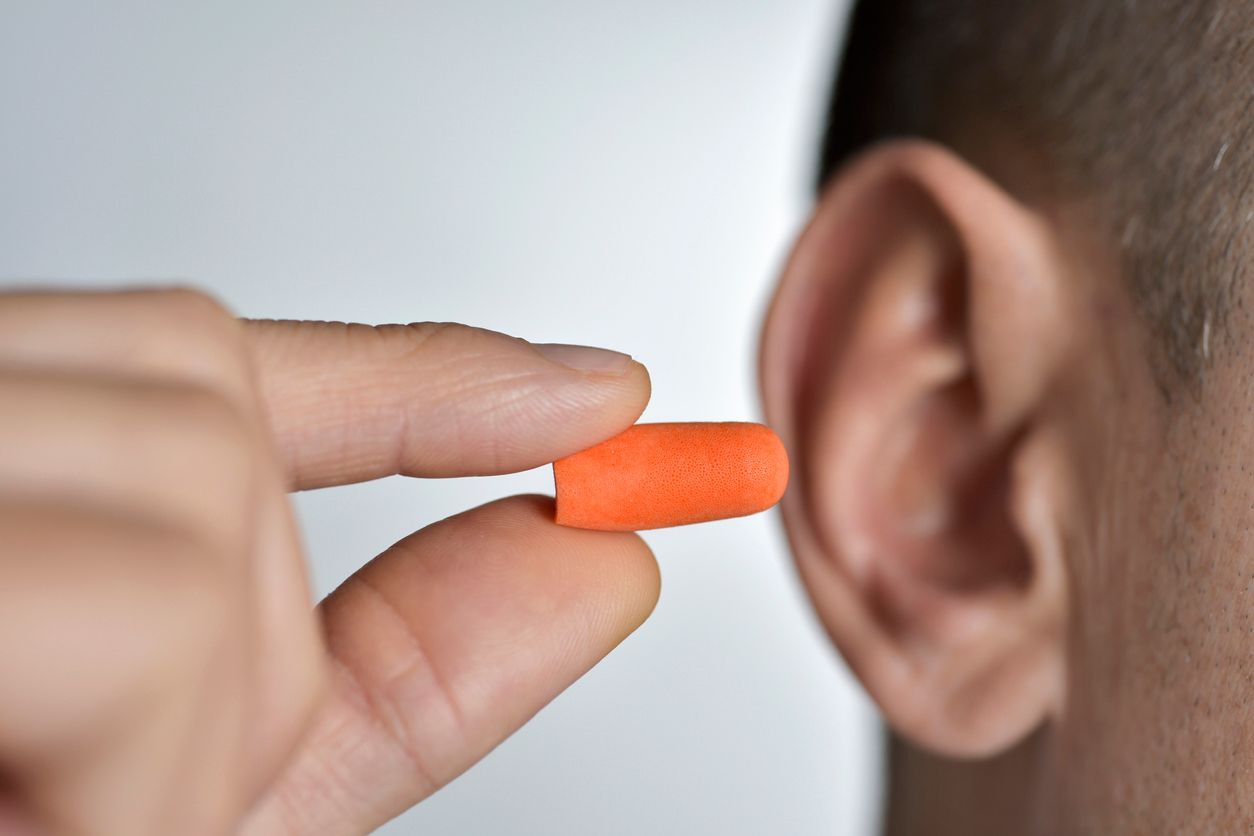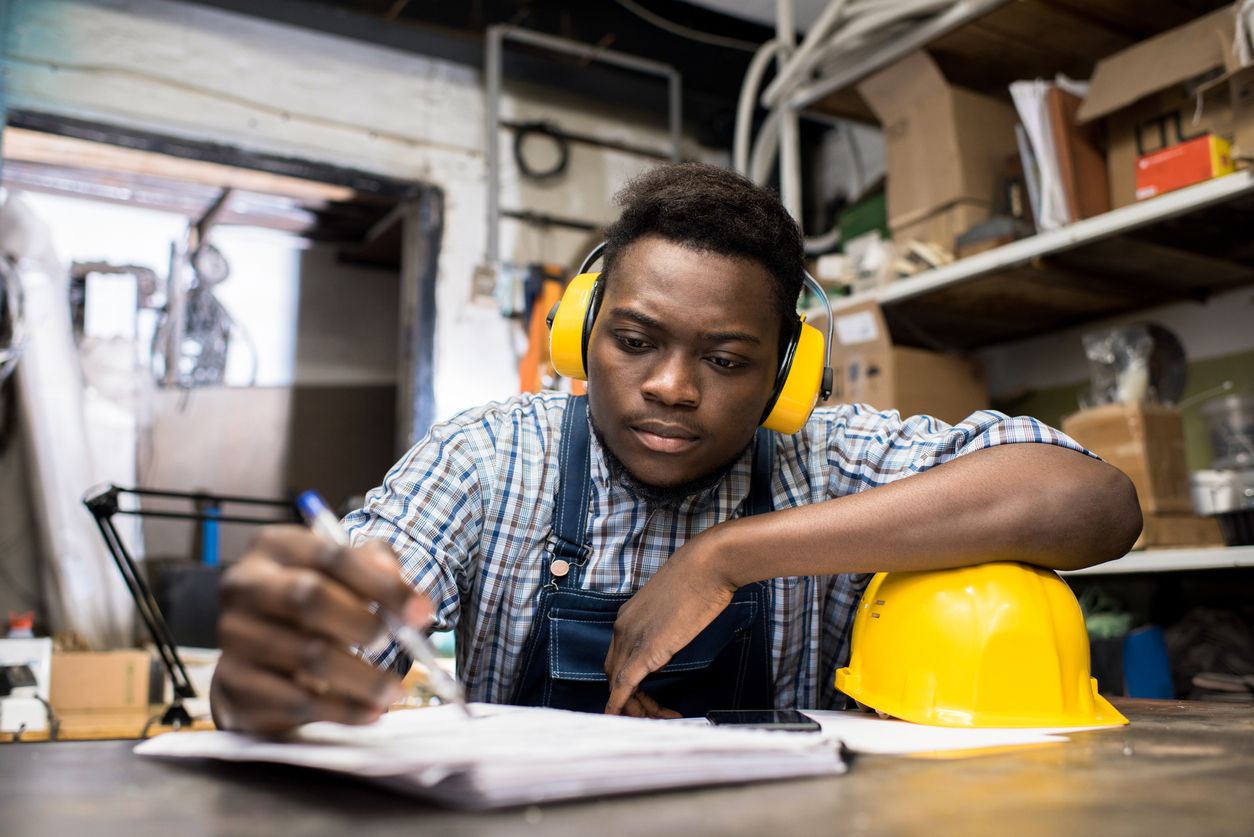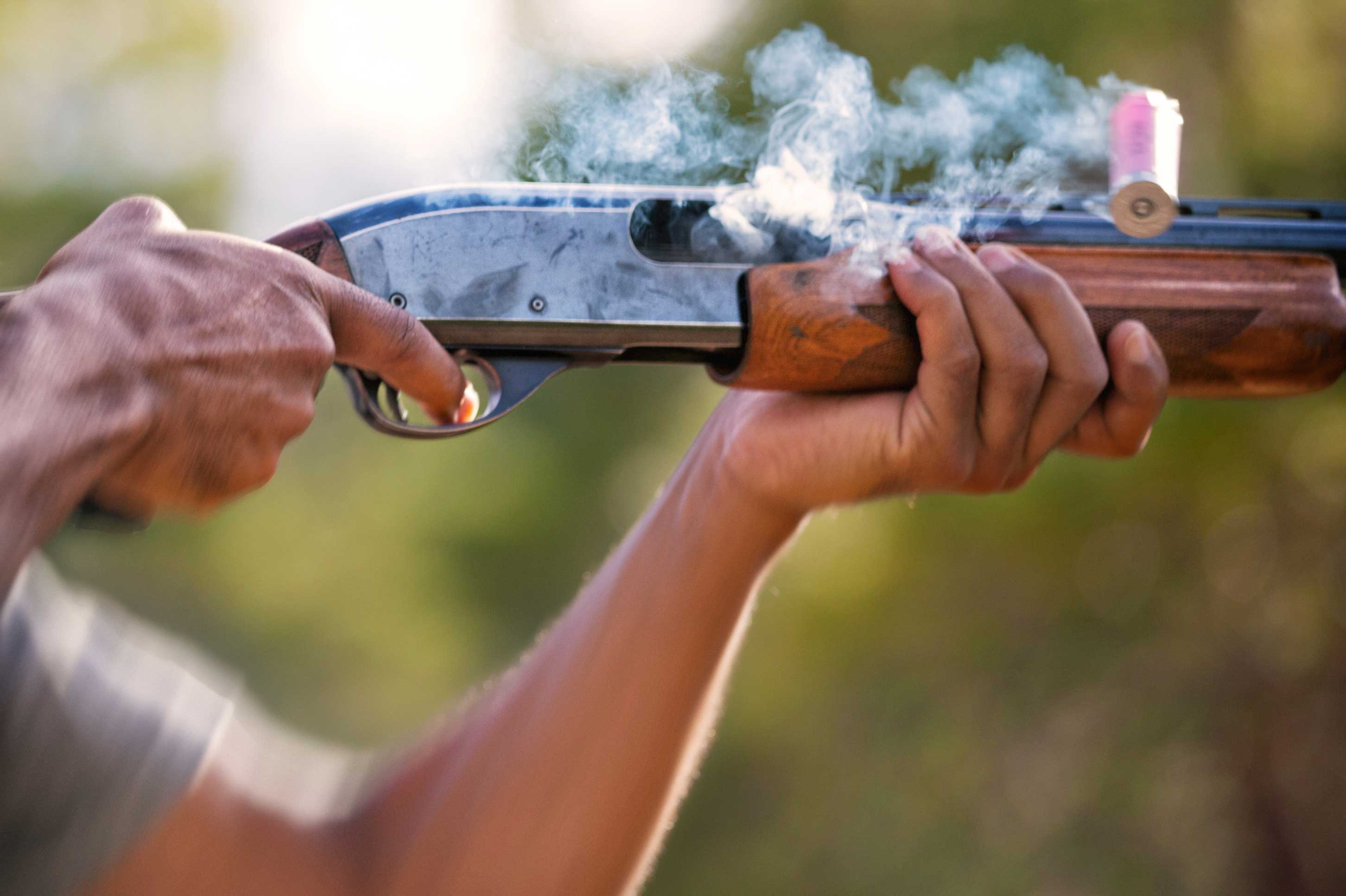- How Many Decibels Is A Gunshot
- Can It Damage Your Hearing
- How Loud Is A Gunshot With A Silencer
- How Far Away Can You Hear A Gunshot
4.1 Regular Gun
4.2 Suppressed - What Hearing Protection To Use
5.1 Earplugs
5.2 Earmuffs - How To Measure Noise Level Of A Gun With Decibel Pro App
When using guns, you should always also consider gun safety. However, hearing safety should be just as important to you.
Why? Because of how many decibels a gunshot is, environments where firearms are used could be hazardous to your hearing.
Prolonged exposure to loud noises can cause hearing damage. Short-term exposure to very loud noises can cause permanent hearing damage and even immediate and irreversible hearing loss.
Therefore, appropriate hearing protection when using a firearm is highly recommended.
Read on to find out how many decibels is a gunshot and how far away you can hear a gunshot. Plus, what you can do to protect your hearing!
How Many Decibels is a Gunshot?
How loud a gunshot is in decibels will depend on the gun and the ammunition.
For example, a gunshot coming from a .22 caliber rifle will generate 140 dB. And that’s not even the loudest gunshot! Powerful centerfire ammunition can exceed 165 dB.
Here is how loud a gunshot is in decibels on average:
- Shotgun gunshot: 155 dB
- Rifle gunshot: 158 dB
- Pistol gunshot: 158 dB
Highest gunshot decibels by caliber (shotguns):
- 12 ga. (3” ammo) w/choke - 161.5 dB
- 10 ga. (3.5”ammo) - 161.4 dB
- 12 ga. (3” ammo) w/o choke - 161.0 dB
- 12 ga. (hunting ammo) – 161 dB
- 12 ga. (3” ammo) - 160.1 dB
- 12 ga. (2.75” ammo) - 159.7 dB
Highest gunshot decibels by caliber (rifles):
- 7 mm Magnum – 166.5 dB
- .30-06 caliber – 163.6 dB
- .270 caliber – 161.9 dB
- .243 caliber – 160.6 dB
- .45-70 caliber – 160.1 dB
- .50 caliber (black powder) – 159.7 dB
Highest gunshot decibels by caliber (pistols):
- .357 – 169 dB
- .44 caliber – 168.8 dB
- .22 blank – 165.3 dB
- .38 caliber – 164.7 dB
- 9 mm caliber – 163 dB
- .40 caliber – 159 dB
Can Gunshot Noise Damage Your Hearing?
Noise levels above 85 dB are considered hazardous to human hearing. The decibels of a gunshot exceed 85 dB. Additionally, the threshold of pain is 130 dB and, as we’ve seen, gunshots from most firearms exceed this noise level too.
Therefore, the answer to `Can gunshot noise damage your hearing` is yes. A loud enough gunshot can damage your hearing. It can even cause immediate hearing loss.
This is why you need to use extra precautions to ensure the safety of your hearing.
How Loud Is a Gunshot with a Silencer?
You’re probably wondering `Ok, but how loud is a gunshot with a silencer?’.
It’s true that a silencer is a good way to reduce gunshot noise. You can fit a silencer on the muzzle of different firearms and reduce the sound they generate. In most cases, using a silencer will reduce the decibels of a gunshot to levels that are safe for human hearing.
However, even with a silencer, guns will still make plenty of noise.
The speed, weight and powder charge of the bullet determines how loud a gunshot is. The faster and more charged a bullet is, the louder it will be.
Some, like the .22 caliber long rifle ammunition, can be reduced to safe levels with a silencer. However, larger calibers such as the .308 rifle gunshot will still be very high.
The chart below shows the difference in decibels between suppressed and unsuppressed firearms:

How Far Away Can You Hear a Gunshot?
The sound of a gunshot travels quite long distances. How far a gunshot can be heard will depend on the ammunition, the firearm, as well as the weather and temperature.
Sound travels faster when temperatures are lower.
Regular Gun
A handgun shot can be heard as far as 1 mile away depending on the conditions.
More powerful shotgun ammunition can be heard up to 2 miles away.
Suppressed
The gunshot from a suppressed firearm will be more silent. Silencers reduce the range you can hear a gunshot to 20-60 meters.
What Hearing Protection to Use
There are several ways you can ensure hearing safety in environments with hazardous noise levels.
Hearing protection is an efficient way to dramatically reduce the sound of a gunshot. Special shooting hearing protection is designed to reduce noise levels to under 140 dB.
To know how well you are protected, check your hearing protection’s NRR (Noise Reduction Rating). All hearing protection solutions need to specify the NRR level. The higher the NRR level, the more decibel reduction the gear provides.
Most shooting earplugs and earmuffs have NRRs between 15 - 33. For indoor shooting, you should use hearing protection with a NRR between 28 – 33.
Earplugs

You can find earplugs designed specifically for shooting or hunting. They are usually made from silicone or foam and have straps or cords for easy use. Another great benefit is that you can have them custom made to fit your ear canal.
Hunter earplugs have extra acoustic filters that allow ambient sound to travel but suppress gunshot noise. They do this through a valve that closes automatically when it is struck by a sound wave.
Earplugs are recommended if you prefer lightweight hearing protection.
Earmuffs

Earmuffs are another good option for hearing protection. They are pricier and heavier than earplugs but provide a great level of protection.
Earmuffs are designed to cover your entire ear. Some also have the ability to enhance hearing while protecting it by electronically amplifying quiet sounds.
How to Measure the Noise Level of a Gun with the Decibel Pro App
You can never be too careful when it comes to loud noises. Environments involving firearms are especially dangerous.
If you regularly use firearms or are otherwise exposed to gunshot noise, you should constantly measure and monitor noise levels to stay safe.
A sound level meter or an app like Decibel Pro can help you measure noise levels and protect you from potential hearing damage or hearing loss. You can easily download the app on your phone or Ipad and get instant sound level readings wherever you need them.
To measure the noise level of a gunshot with Decibel Pro, simply open the app and place it as close as possible to the source of sound. It will instantly show you the decibel level on screen.
To learn more about the Decibel app, click here.
To learn more about protection from loud noises here.



